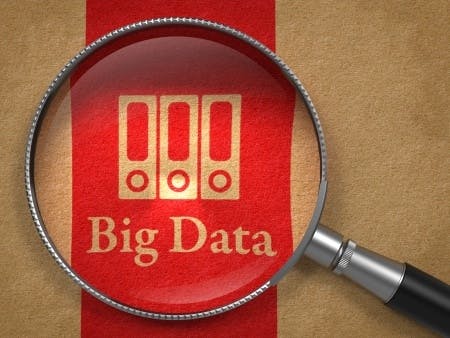As is becoming more prevalent, there are three emails in my inbox this morning, all with some post or webinar about “Big Data.”
TLNT is hosting a webinar titled Enabling Success With Big Data – Driven Talent Acquisition, Talent Management magazine has an article, Where’s the Value In Talent Analytics, and Chief Learning Officer magazine has The ‘Datafication’ of Learning.
Recently, LinkedIn published an article (Why We No Longer Need HR Departments) and a Spreecast (Is It Time To Fire Your HR Department?), both featuring Bernard Marr, described as a “best-selling author and enterprise performance expert.” The post had 19,000 LinkedIn shares, and 1,143 tweets as of 2 pm the day it was published.
A different approach to HR
In his post, Mr. Marr advocates changing the name of HR, and splitting it into a “people support team” and a “people analytics team.” The people support team would do the “taking care of the people stuff” while the analytics team would use big data to manage and predict human behavior, ideally leading to improved performance.
The reason for splitting HR in two? The conflict of interest between taking care of the people and looking hard at what the people are doing.
There is a fair point there, although I vehemently disagree with splitting HR. But that wasn’t what got my attention.
When asked about what he meant by using Big Data and data analytics, Mr. Marr offered a couple of examples. He didn’t mention the industry, but he said that one organization found, through analysis, that those with a criminal record outperformed those without a criminal record.
The second example was of a construction company who provided wearable devices to their employees to measure stress levels, and when the stress was too high, they would pull them off for a rest. He contrasted this as a better way to gauge employee engagement, using real data instead of a survey which employees didn’t trust.
I’m going to skip over the criminal record and the stress test from an employee relations perspective, and just hit on the data issue. Maybe I’ll come back to the other at some point when I stop shaking my head.
A very basic problem
I applaud the attention to the use of data and analytics. I truly believe it is the single most important strategy for HR, because it is the only way to move to evidence-based decision-making about people.
And the tools and techniques these days are truly exciting. There are amazing organizations out there who, I’m sure are ready for predictive analytics, but most organizations aren’t, and HR, for the most part, is not.
But we have a basic problem: Our data stinks.
We can’t really measure performance because our performance management program doesn’t really measure performance. We can’t track voluntary turnover because managers put in whatever term code strikes them as appropriate — or not. We can’t [easily] correlate individual performance to unit performance, because financials are summed to an accounting department, while individual performance is summed to a manager. Succession plans, in most cases, are static documents that are outdated by the time we need to use them.
And those are only some of the systemic issues. In addition, there is human error.
Manager and employee self-service have cast a huge shadow over the credibility of HR data, because neither group really understands the criticality of the work they’re doing. A manager who picks the first job code that seems to fit stands a good chance of picking the wrong one, and your “by job” data is now compromised.
Data must be credible to have value
Organizations that have basic employee data in their Human Resource information systems, and supplemental employee data in their Performance and Learning system, can’t easily analyze the data together unless data have been mapped carefully. And I wonder what percent of HR professionals are still chasing down performance plans after the deadline?
Data has to first be credible before it can be useful. That requires a strategic look at output requirements, accountability for the data accuracy, and an audit system to ensure quality. This is work that HR may see as tactical, but it is ever-so strategic.
Otherwise Big Data will be nothing more than big, messy data, and HR will spend more time than they’re already spending playing defense.
And I just can’t let this one go — criminals outperforming non criminals? Really? Do we care since — hopefully — we won’t be hiring criminals?
I can appreciate someone outside the field of HR providing helpful input, fresh perspective and innovating thinking, but I’d prefer that individual at least take time to understand the basics of the profession.
This originally appeared on the ….@ the intersection of learning & performance blog.
